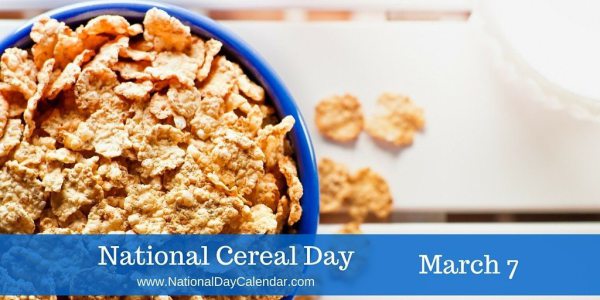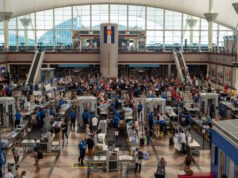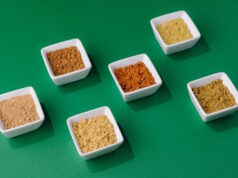
Get your bowl and your spoon ready for March 7 is National Cereal Day. Since the end of the 19th century, cereal has become America’s most popular breakfast food.
Do you remember mornings eating a bowl of cereal, reading the back of the box and trying to find the toy inside the box?
Now, not only is cereal eaten for breakfast, it has become a popular bedtime snack, and some people even have a bowl for an evening meal. Cereal is also used in many cake, cookie and bar recipes. The most popular one is Rice Crispy Bar Treats.
Some Cereal History:
- Ferdinand Schumacher, a German immigrant, began the cereal revolution in 1854 with a hand oats grinder in the back room of a small store in Akron, Ohio. His German Mills American Oatmeal Company was the nation’s first commercial oatmeal manufacturer. In 1877, Schumacher adopted the Quaker symbol, the first registered trademark for a breakfast cereal.
- Granula, the first breakfast cereal, was invented in the United States in 1863 by James Caleb Jackson, operator of Our Home on the Hillside, which was later replaced by the Jackson Sanatorium in Dansville, New York. The cereal never became popular since it was inconvenient as the heavy bran nuggets needed soaking overnight before they were tender enough to eat.
- The cereal industry rose from a combination of sincere religious beliefs and commercial interest in health foods. Dr. John Harvey Kellogg experimented with granola. He boiled some wheat, rolled it into thin films, and baked the resulting flakes in the oven; he acquired a patent in 1891. In 1895 he launched Cornflakes, which overnight captured a national market.
- In 1906, Dr. John Harvey Kellogg’s brother, William K. Kellogg, after working for John, broke away, bought the corn flakes rights from his brother and set up the Kellogg Toasted Corn Flake Company. His signature on every package became the company trademark and insurance of quality.
- Charles W. Post introduced Grape-nuts in 1898 and soon followed with Post Toasties.
- Because of Kellogg and Post, the city of Battle Creek, Michigan is nicknamed the “Cereal Capital of the World”.
- The first cereal grains were domesticated by early primitive humans, about 8,000 years ago.
- 50 percent of Americans start their days with cereal.
- Americans consume 101 pounds or 160 bowls of cereal per person every year.
- The cereal industry uses 816 million pounds of sugar per year.
- Rice Krispies mascots Snap, Crackle and Pop briefly had a fourth brother named Pow in early 1950.
- To create puffed cereals, makers use a pressure-cooking method called “gun-puffing,” a process that Quaker Oats developed at the turn of the 20th century.
- Astronauts ate Kellogg’s Corn Flakes aboard Apollo 11, the first moon landing.
- Cereal is a food made from processed grains that is often eaten as breakfast.
- The word cereal comes from Cerealia, the name of ancient Roman ceremonies that honored Ceres, the goddess of grain.
- Cereal is often eaten cold with with milk, yogurt, and sometimes fruit, but may be eaten dry.
- Cheerios – Lester Borchardt, a physicist working for General Mills, spent many months and more than $150,000 trying to get a puffing machine to quickly turn out grain cereal. His bosses told him to pull the plug, but Borchardt pressed on, and finally got the machine to make tasty little “o”s. Cheerioats, as they were first known, hit shelves in 1941. After Quaker Oats claimed trademark infringement, General Mills changed the name to Cheerios.
- Lucky Charms – Charged with developing a one-of-a-kind cereal for General Mills, developer John Holahan came up with a prototype that combined Cheerios with circus peanuts. The circus peanuts became marshmallows—or “marbits”—and the cereal adopted a leprechaun mascot named Lucky, who has been the face of Lucky Charms for more than 50 years—with one exception. For a brief spell in 1975, Waldo the Wizard graced the boxes of Lucky Charms in the New England market.
- Cap’n Crunch – A word on the Cap’n: His full name is Horatio Magellan Crunch, and he was born on Crunch Island in the Sea of Milk. In 2013, a food blogger noticed a scandalous disparity on Cap’s uniform. His sleeves only sported three yellow stripes instead of four, making him technically a Commander in the Navy, a position one rung below a Captain. When the disgrace was revealed, Cap’n Crunch immediately headed to Twitter to defend his position, claiming “All hearsay and misunderstandings! I captain the S.S. Guppy with my crew—which makes an official Cap’n in any book!” and “Of course I’m a Cap’n! It’s the Crunch—not the clothes—that make a man.”
Sources:












